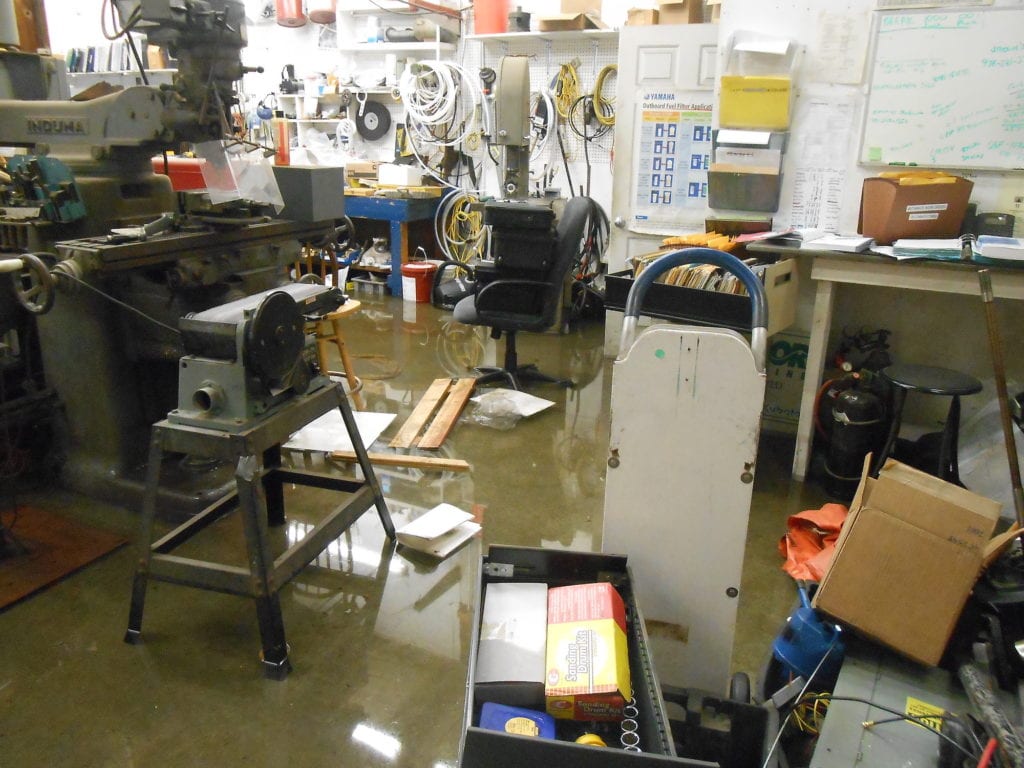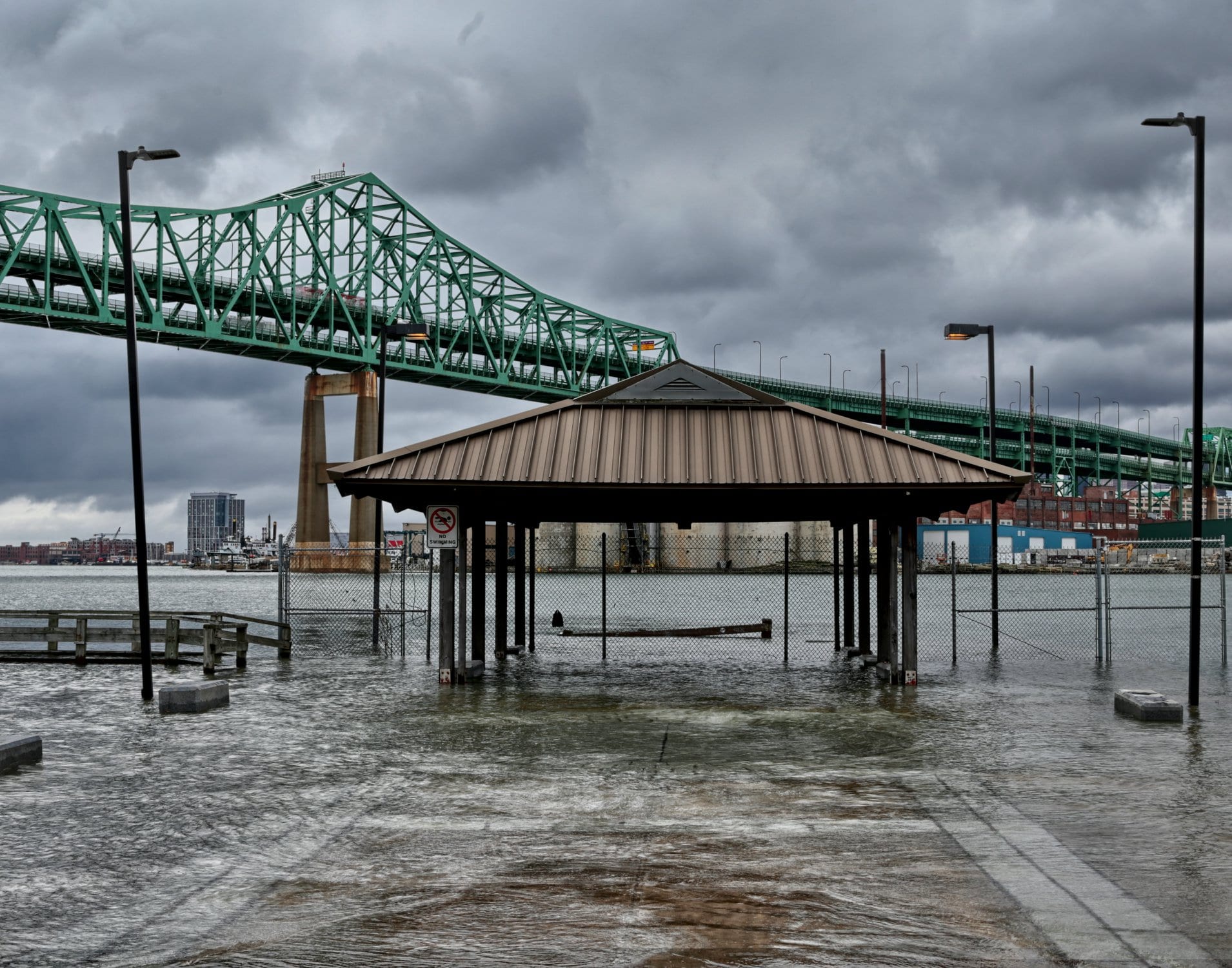Climate change is already causing massive financial losses across sectors of the economy. From insurance, to infrastructure, housing, public health, and the electric grid, we will require funding and investment to secure our economy in the transition away from fossil fuels. Moreover, funding is necessary for resilience projects, remedying the current and projected impacts of climate change. Financing climate change is best addressed with large scale measures, one of which has been gaining traction as potentially having many co-benefits, is a policy that puts a price on carbon pollution.
Massachusetts is particularly vulnerable to climate change impacts; it is ranked fourth in the nation for the most commercial properties at risk by the end of the century.
- Sea level rise is expected to be about 25% higher in New England than the global predicted average
- Flooding from storm surge, the wind-influenced tides that lead to coastal flooding, is projected to be between 5 and 7.5 feet above current average high tide as soon as 2050
- There is an 80% chance that we will experience at least one flood that exceeds 10 feet by the end of the century.
- Climate change and rising oceans make Category 4 and 5 hurricanes more likely to strike Massachusetts.
With the population of the state highly concentrated around the metro-Boston area and along the coast, these threats are a serious concern to citizens, businesses, government officials, and city planners.
Financing Resilience
Reports of Governor Baker signing a bill authorizing $2.4 billion in capital allocations for investments in safeguarding residents, municipalities and businesses from the impacts of climate change through an Environmental Bond Bill made headlines in 2018. However, line items and funding that appears within a bond bill is not necessarily distributed. A bond bill is simply a statement of support from the legislature for funding. The executive branch has full authority to proceed or not proceed with any earmarked project.
Governor Baker’s Executive Order 569, released in 2016, ordered the creation of a Climate Adaptation Plan that includes a statewide adaptation strategy, and the establishment of the Municipal Vulnerability Preparedness Program (MVP), housed under the Executive Office of Energy and Environmental Affairs. The MVP program “provides support for cities and towns in Massachusetts to begin the process of planning for climate change resiliency and implementing priority projects.” The 2018 Environmental Bond bill set aside $75 million over 5 year for MVP, equating to about $15 million a year. However, funding for 2019 has only been allotted at about $11 million, already creating a $4 million funding gap. Such essential programs should not have to only rely on the promise of funding that may never be actualized.
The exact cost of climate change is hard to quantify. However, with projections of 2.8 feet of sea-level rise by 2100, costs could reach over $90 billion in the Northeast. With commitments to reduce greenhouses gases, like the Global Warming Solutions Act, Massachusetts must ensure climate change mitigation and adaptation are adequately funded and may need to pick up the slack due to inaction at other levels of government.
How Are Businesses Affected?

Flooding at Manchester Marine during the winter of 2018
Last year, we spoke with 350 businesses that are at risk for climate change impacts during our Businesses Acting on Rising Seas Campaign . We found that businesses’ day-to-day operations are already disrupted, and long-term strategic plans will be impacted, in ways such as:
- Supply chains can be disrupted by weather events (shipping concerns)
- Access to businesses is at risk during flooding events and winter storms , decreasing foot traffic
- Electric outages will be more frequent (due to power line damage) and limit the number of days storefronts are open
- Insurance expenses will increase, adding additional costs to operations
- An expected increase of 25-38 days over 90 degrees in Boston will increase energy demands
- Urban neighborhoods and business districts will be less frequented due to lack of cooling centers
The repercussions of these impacts can hurt businesses’ bottom lines due to significant economic and physical damage. Carbon pricing is a policy solution that aims to reduce pollution and move the economy towards cleaner solutions, while raising revenue that can go towards funding projects to protect our economy that is reliant on tourism, small business districts, and urban areas that are at risk.
Funding Resilience with a Price on Carbon
A basic economic principle is that the price of goods reflect their costs. However, the market has failed to account for the very significant and overarching costs of fossil fuels and the carbon pollution that results from burning them. In fact, those costs have been hidden behind massive subsidies, making us over consume fossil fuels without addressing the environmental and health challenges of burning them.
Carbon pricing has significant co-benefits that reverberate across the state and the economy. By putting a per-ton price on carbon emissions, we can also generate vital funds for green investment, while stimulating job growth and clean innovation. This will reduce pollution and increase renewable energy solutions leading to potentially thousands of new clean energy jobs.
Revenue raised can go towards a Green Infrastructure Fund, which will create programs where businesses can apply for resources to prepare for weather events and climate impacts, making them more resilient, as well as supporting infrastructure solutions. We need an approach that will bring funds to support our Main Streets and business districts that increase the economic vitality of communities. Investing carbon pricing revenue into projects that benefit and sustain our communities is the best approach to ensure an ethical response to climate change.
The policy also would significantly reduce air pollution by incentivizing consumers and businesses to move away from fossil fuel consumption. This is vital for the health and wellbeing of our communities. Pollution kills at least 9 million people globally each year, with the US and Japan “in the top 10 for deaths from modern forms of pollution, fossil fuel-related air pollution and chemical pollution.” A recent Harvard study found that carbon pricing could prevent heart attacks, strokes, premature birth weights, lost days of school and work, and prevent premature deaths and reduce the number of hospitalizations. We have a chance to put our state at the forefront of climate policy in the nation, while protecting our communities and securing funding for much-needed climate resiliency work, and we are close to making that happen.
Within the next month, we will release our Businesses Acting on Rising Seas report, expanding on how how climate change is already affecting small businesses. It features case studies on how business leaders are taking action, offering solutions on how we can to prepare – Stay tuned!









